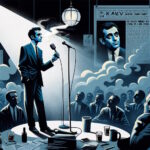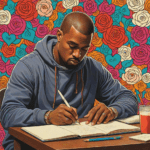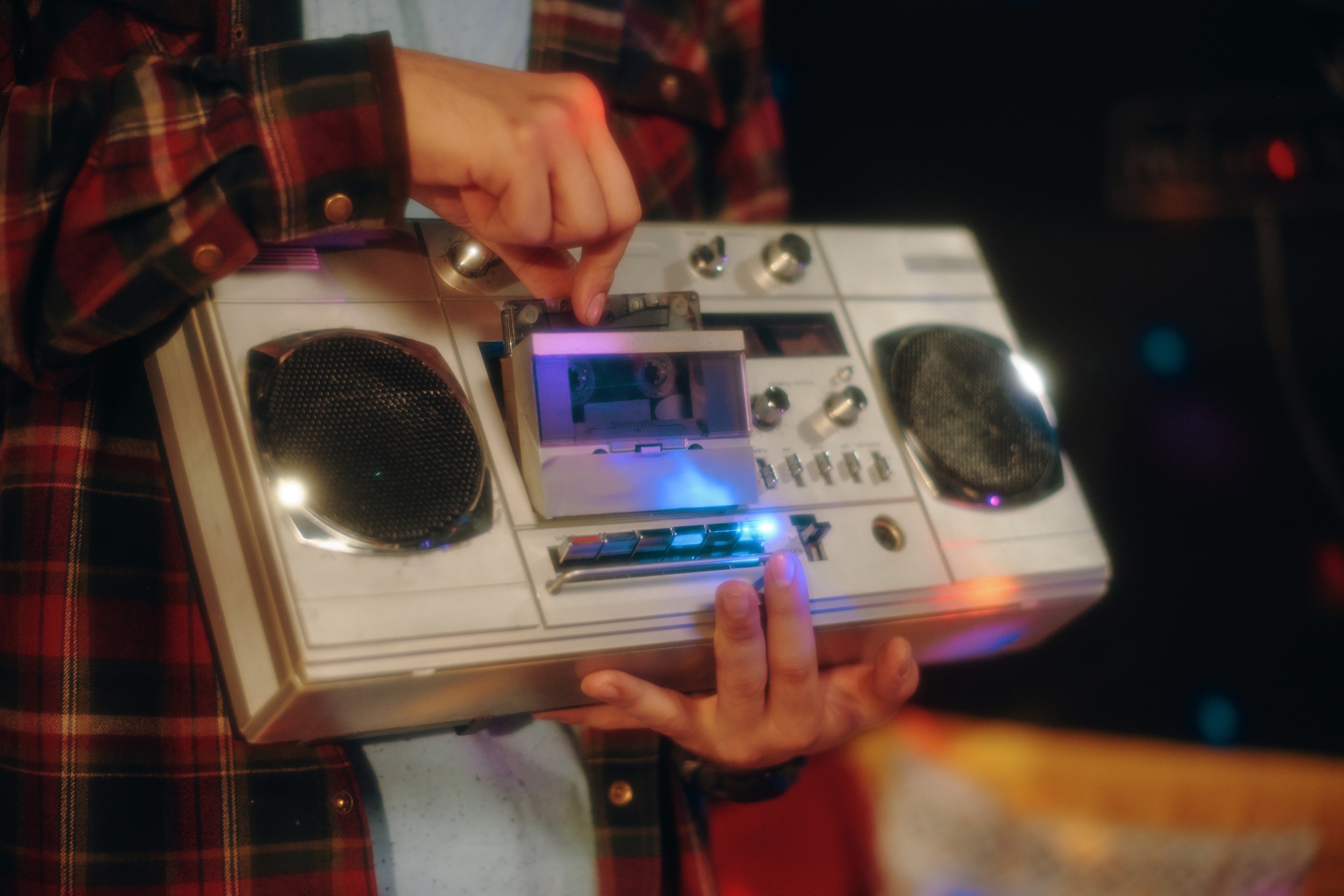The boombox was an iconic symbol of 1980s culture, beloved for its portability and power to share music. With its large speakers and cassette decks capable of playback and recording, the boombox allowed people to literally carry their music with them and experience it with big, booming sound wherever they went.
I still remember the first time I saw someone with a boombox. It was Robby Watkins in 10th grade, with his shiny silver ghetto blaster perched on his shoulder, its dual cassette decks primed with a mixtape he had spent hours carefully crafting. As the Beastie Boys flowed across campus, I was transfixed by the spectacle – the sheer physicality of the music, blasting at full volume for all to hear.
That day sparked a years-long love affair with my boombox that streaming music has never been able to rival. My boombox was my prized possession, my personal DJ bringing me musical joy wherever I went. In my room, I would play my favorite tapes while dancing and singing the lyrics at the top of my adolescent lungs. Out in the neighborhood with friends, we designed elaborate skits and lip syncs to accompany our favorite Tears for Fears, Prince, and Run DMC tracks. That boombox was the background music to my high school life.
These days when I go for a walk, everyone has tiny smartphones and wireless earbuds, isolating them in their own worlds of streamed playlists. Sure, streaming songs is easy and convenient. But locking music up in apps seems to remove its physicality – no tape hissing as it rewinds, no ritual of sliding the cassette from its case, no hunting for the perfect radio station. And there are definitely no neighborhood dance parties around a phone!
I miss the shared experience and vibrant culture of coming together around music that the trusty boombox enabled. The delight of making the perfect mixtape for a friend. The sheer sport of lugging your boombox around to share sounds from its speaker grills bigger than your head. Music may be immaterial now, but it seemed to have so much more soul back when a boombox let it exist loud, proud and free in the air around us. I don’t need a smart music box. Just give me that old boombox magic again!
In an era before personal listening devices were common, the boombox became a way for people to broadcast their musical taste and identity. By blasting their favorite tunes in public places, boombox owners used music as a statement of self-expression. The prominence of new musical styles like hip hop, with their focus on beats and wordplay, gave even greater importance to the physical, immersive experience of feeling the music as much as hearing it.
Beyond sheer sound, the boombox also shaped social gatherings and urban spaces. Groups would congregate around a boombox out on city streets or parks, the music drawing people together as a shared activity. The image of the graffiti artist with a boombox became iconic in 1980s pop culture. As much as the music itself, carrying around this representation of public entertainment redefined concepts of portability and cultural ownership.
So while the components of a boombox were simple, its effect on music culture and mobility was profound. More than just a physical box, it resonated with the irreverent, creative spirit of young people and defined an attitude. For those shaping modern popular music of the time, the boombox provided power and presence to bring their creations right to their audiences.
I miss the old days when music felt more real. My bright yellow boombox was like a portal to another world, cranking out the unmistakable beats of Lauryn Hill, TLC, and A Tribe Called Quest on worn cassette tapes. That booming sound – somehow warmer and richer despite the slight tape hiss – would pull at my soul. Music moved me emotionally back then, not just as background noise.
There was something special about finding an obscure new track at the indie record store or taping my own perfectly curated mixtape from hours glued to the radio. My boombox playlists were intimate diaries; streaming algorithms today could never capture what those songs meant to me. They represented freedom – declaring my identity while roaming the streets or providing the soundtrack for high school hangouts well past midnight. Oh how we danced without judgement or limits!
Now I feel tethered to earbuds, barely hearing what’s piping out generically to entertain me while I distractedly scroll through screens. It cheapens the art. My kids can barely appreciate full albums or lyrics with their infinitesimal attention spans. Will they ever savor putting the needle to vinyl or feel that kick inside when the boombox powerfully unleashes their favorite song?
Maybe I sound old and sentimental, but I really do miss how emotional and meaningful music was to my generation. My boombox knew me and gave me an outlet. Streaming playlists soothe more than inspire. I want that cathartic, soul-shaking feeling back! At least I’ll always have my mixtapes, clinging to simpler times of booming anthems and carefree joy.










